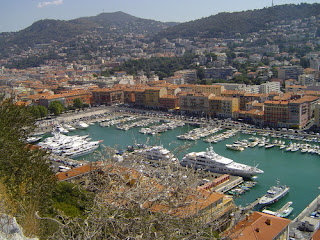The famous writer Somerset Maugham once famously mused that the French Riviera was a 'sunny place for shady people', and bold and brashy Nice does its best to epitomise this nefariously glamorous reputation. A collage of sultry cool and seedy decadence, Nice is a city that it is hard not to become enveloped in.
The traffic may be a nightmare and the tourist hordes can be suffocating in summer, but amongst the tack and the bawdy streets are a smattering of art galleries and museums (over 20 in total), a lively old quarter and the wide Mediterranean seafront that brought visitors here in the first place. The local authorities have recently signalled their intention to keep the city moving forward by the impressive redevelopment of the Place Massena, the city's largest civic space.
Modern Nice very much retains its split personality; you can revel in the world of such artistic greats as Matisse, Chagall and Picasso, marvelling at the famed local light that has always made Nice a mecca for artists. Then 10 minutes later you can delve beyond the centre and enter the insalubrious graffiti blighted suburbs that help make this the fifth largest city in France.
Nice may not always be a relaxed getaway or have the same exclusivity that its fin-de-siecle high society patrons once sought, but it has plenty to keep visitors occupied with in its own right. It's also a convenient base for longer explorations of the Côte D'Azur. And if it all gets too much, you can do what people have being doing for centuries: Turn your back on Nice and enjoy those sweeping Mediterranean views.
The traffic may be a nightmare and the tourist hordes can be suffocating in summer, but amongst the tack and the bawdy streets are a smattering of art galleries and museums (over 20 in total), a lively old quarter and the wide Mediterranean seafront that brought visitors here in the first place. The local authorities have recently signalled their intention to keep the city moving forward by the impressive redevelopment of the Place Massena, the city's largest civic space.
Modern Nice very much retains its split personality; you can revel in the world of such artistic greats as Matisse, Chagall and Picasso, marvelling at the famed local light that has always made Nice a mecca for artists. Then 10 minutes later you can delve beyond the centre and enter the insalubrious graffiti blighted suburbs that help make this the fifth largest city in France.
Nice may not always be a relaxed getaway or have the same exclusivity that its fin-de-siecle high society patrons once sought, but it has plenty to keep visitors occupied with in its own right. It's also a convenient base for longer explorations of the Côte D'Azur. And if it all gets too much, you can do what people have being doing for centuries: Turn your back on Nice and enjoy those sweeping Mediterranean views.


















































